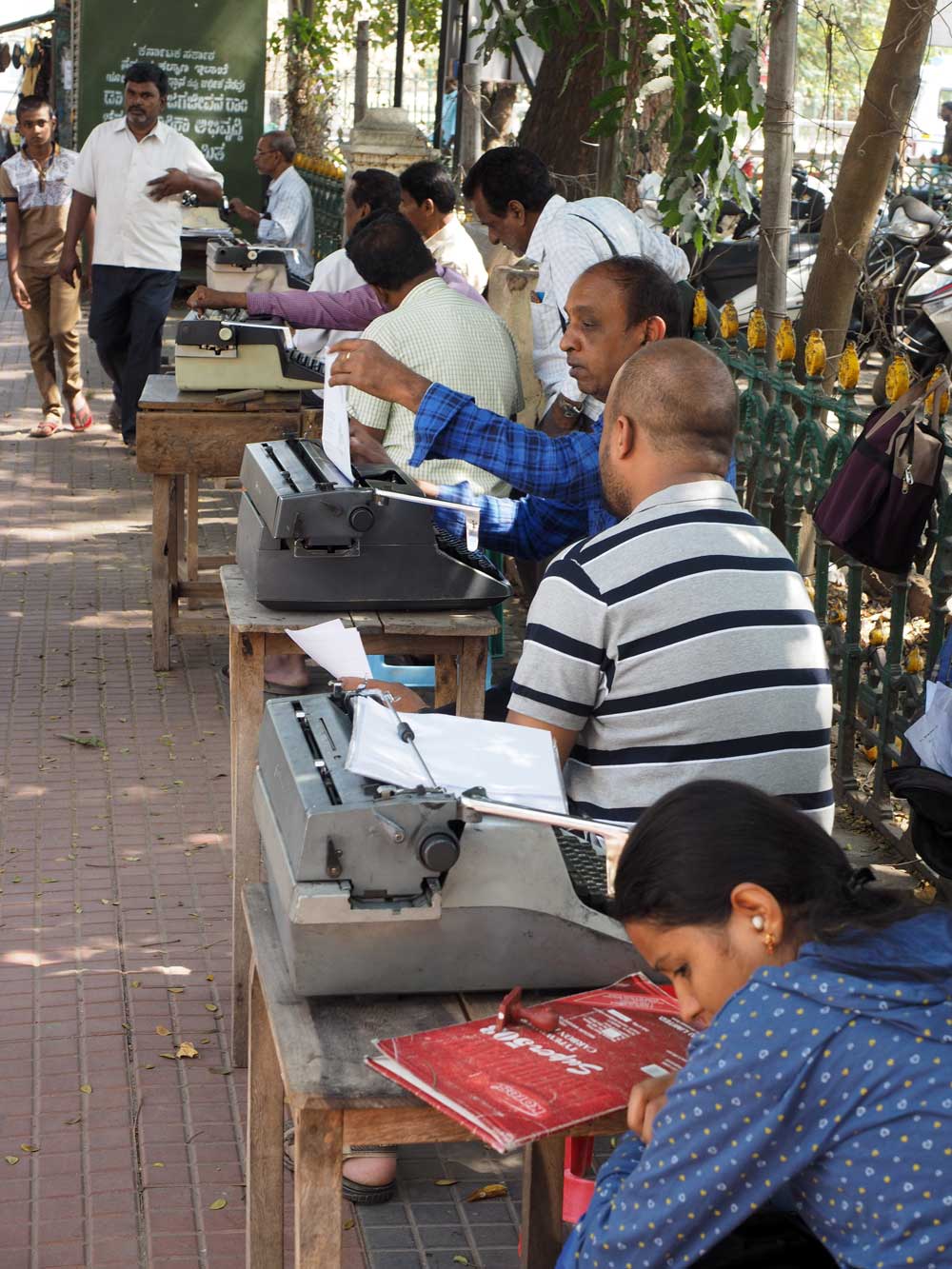
At this sidewalk office you can get your official letters typed out! I think all the typewriters have Kannada script.
19 January Mysuru (Mysore)—Part 2
I took a day off from sightseeing to work on photo and writing projects and do
some reading. India has a large English press with a great selection of both
newspapers and magazines that I enjoy perusing, though my interest in movie
stars and local politics cannot match that of the Indians. My favorite magazines
are those that cover photography or travel. The hotel manager suggested that
today, Sunday, would be good to get a train ticket, so I caught a three-wheeler
over to the station, only to find the advance booking office closed for the day.
I dropped by the restaurant Adyar Ananda Bhavan, just south of the station, for
a snack then walked through the central shopping area back to my hotel. Most
stores were closed today, but I liked stretching my legs.
20 January Mysuru (Mysore)
In the early afternoon I headed to Mysore Palace and was happy to find it
relatively uncrowded. Best of all, staff now permit photography inside! The
self-guided route began past sculpture galleries of Indian and Western art,
swung beside the central Wrestling Courtyard, then turned into the lofty and
lavishly decorated Marriage Pavilion. A long series of large paintings of the
Dasara Procession—Mysore’s biggest celebration—wrap all the way around the
palace’s main floor. I continued through the cloisters around the Wrestling
Courtyard, then along another section of sculpture galleries, highlighted by the
Golden Howdah that’s covered in 80 kilograms of gold sheet.

At this sidewalk office you can get your official letters typed out! I
think all the typewriters have Kannada script.
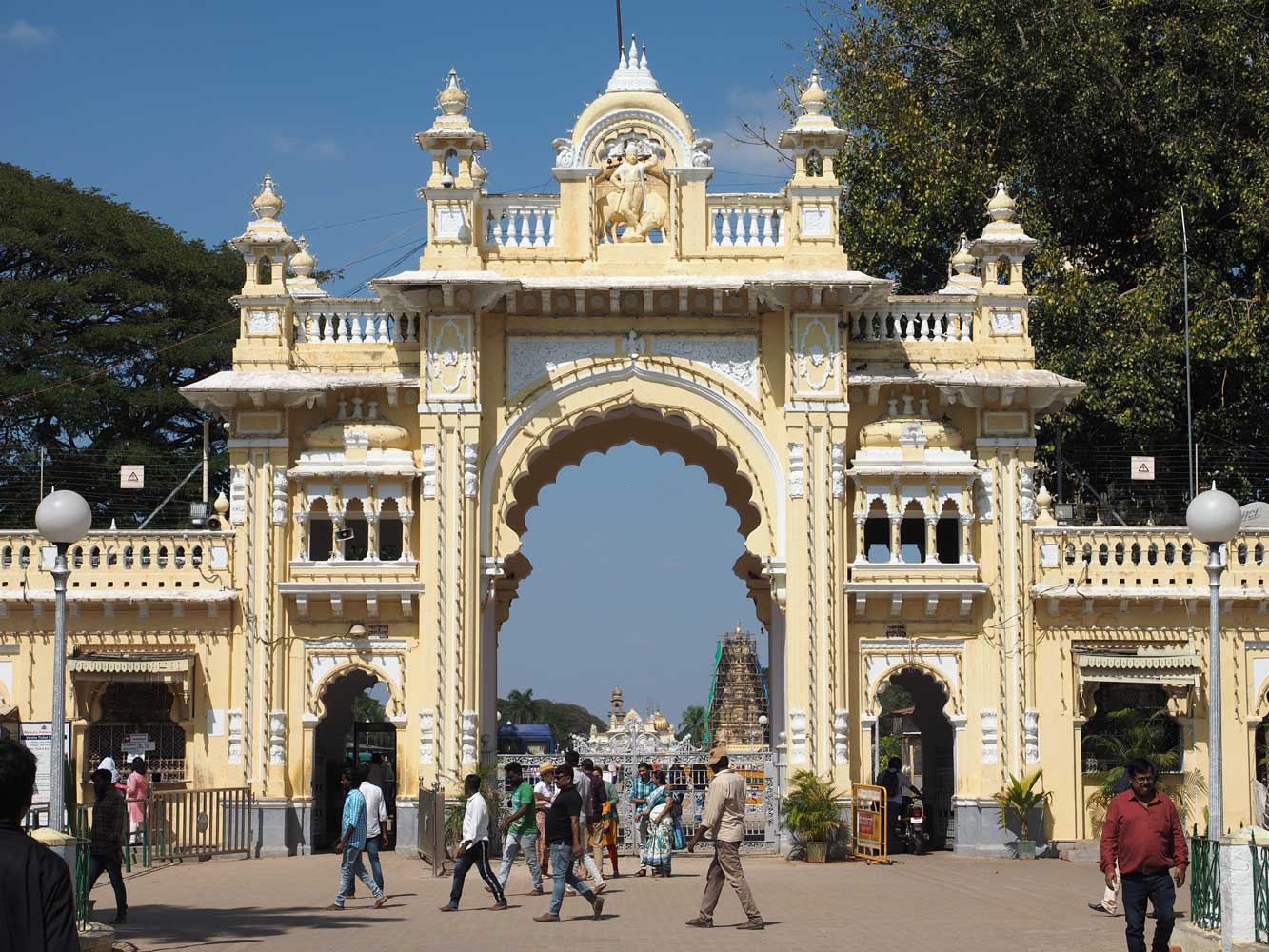
The main southern gate for Mysore Palace

Side view (from south) of Mysore Palace

Marriage Pavilion
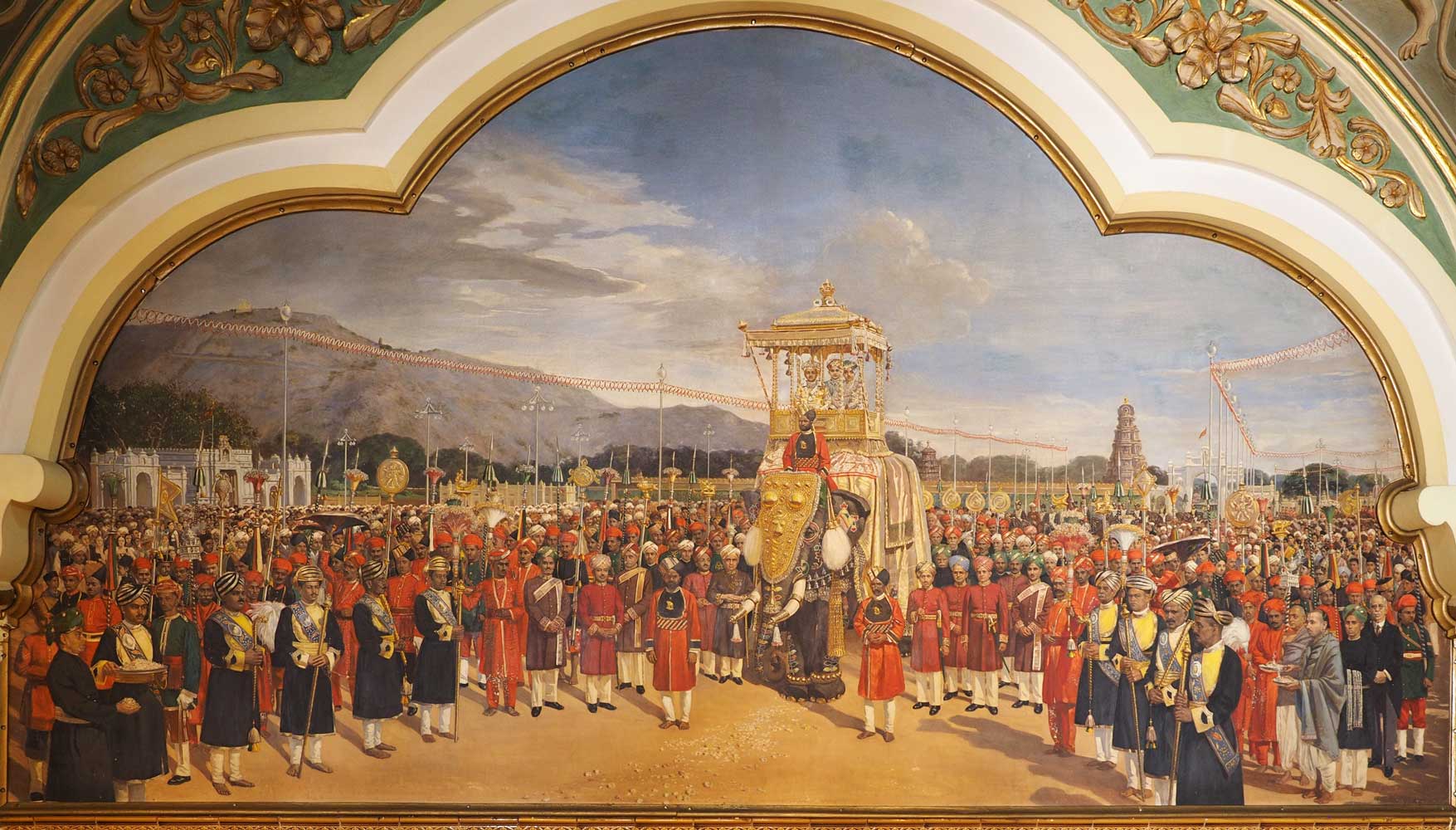
Maharaja on a Caparisoned Elephant, one of the many murals that wrap around
the lower floor
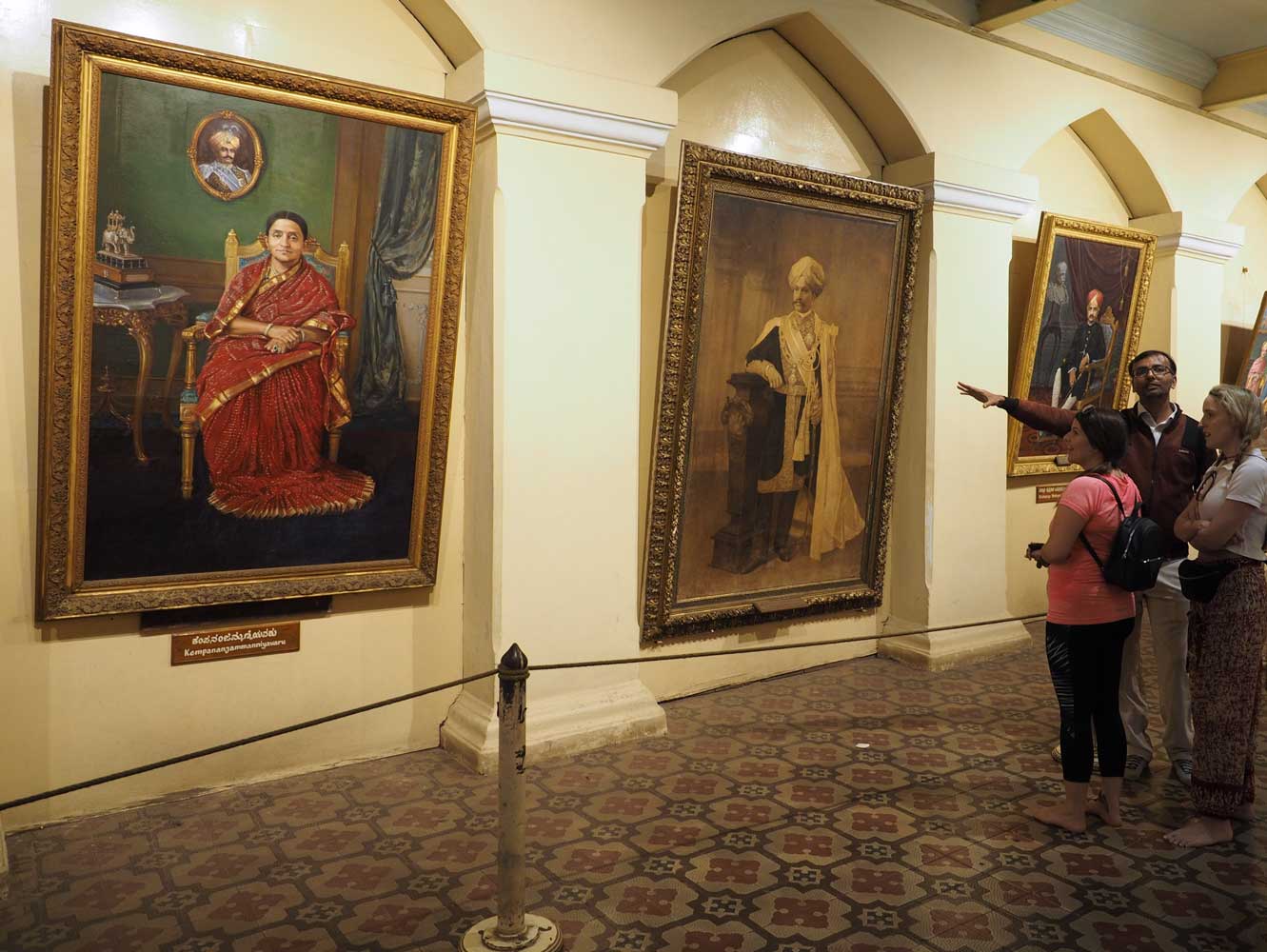
Members of the royal family gaze out from a long-ago time.
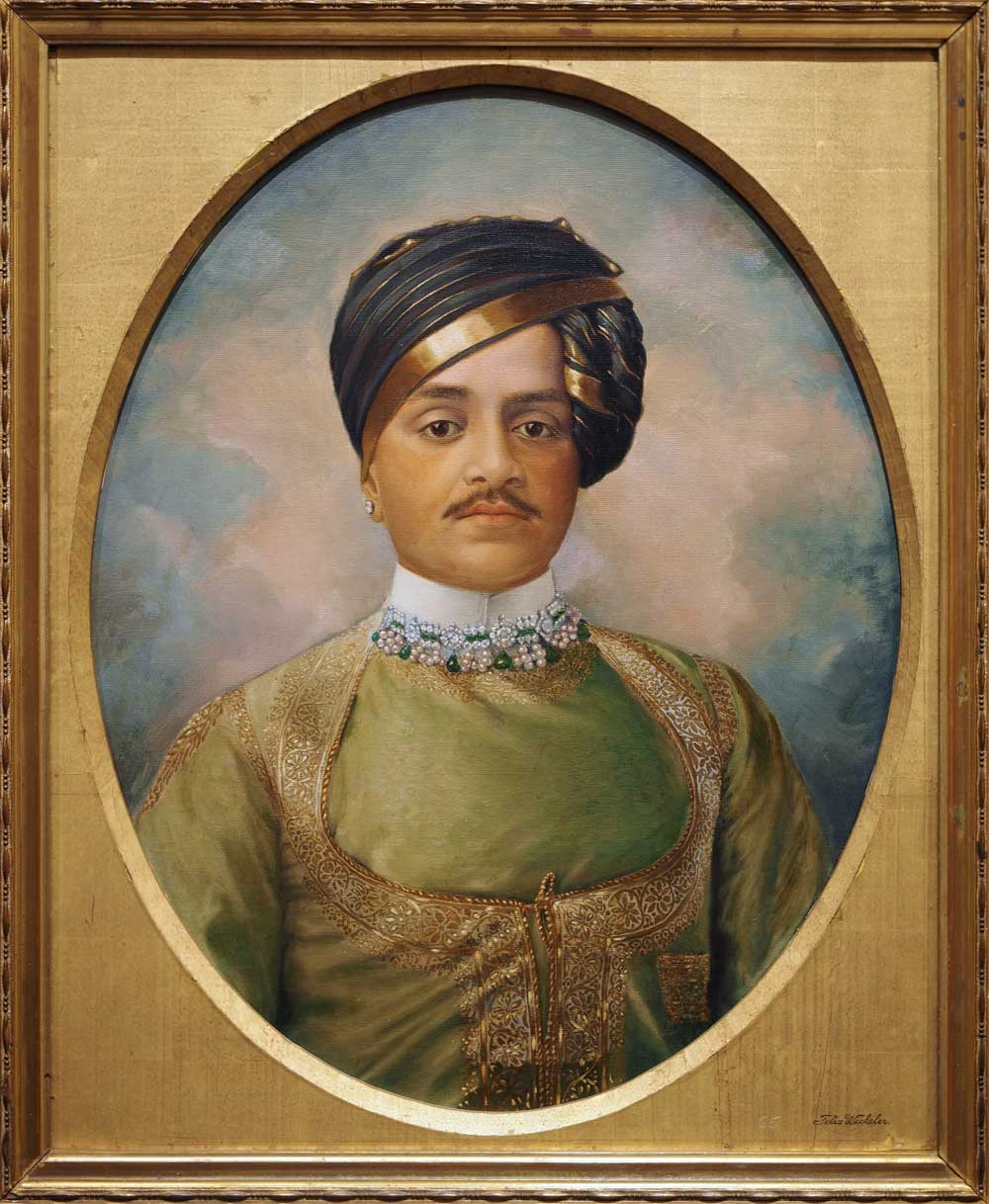
Kanteerava Narasimharaja Wodeyar (1988-1940) was the heir apparent of
the princely state of Mysore from 1895 until his death in 1940. He was a well
travelled man, a very accomplished public speaker, and an excellent horseman who
played polo alongside his brother to bring laurels to the Mysore team. He was a
great lover of books and a passionate patron of music, of which he was no mean
exponent. (Wikipedia)

Originally the Rajas of Mysore rode in the Golden Howdah for the Dasara
procession, but now a statue of Chamundeshwari rides in it.
Upstairs I walked past many royal paintings and entered the Casket Room, full of gifts to the rulers. The enormous Public Darbar Hall in front has a painted ceiling, lots of arches, and a view across the courtyard. Most impressive of all on this floor, the Private Durbar Hall features a stained-glass ceiling, delicate steel grillwork, carved woodwork, and chandeliers. From here a staircase led down and back outside. The uppermost rooms of the palace—I assume the bedrooms—are not accessible. I had just enough time to complete the visit before police closed the tour route early, perhaps for a VIP visit. A sign outside pointed to a Residential Wing, but I would have to come another day to see it.
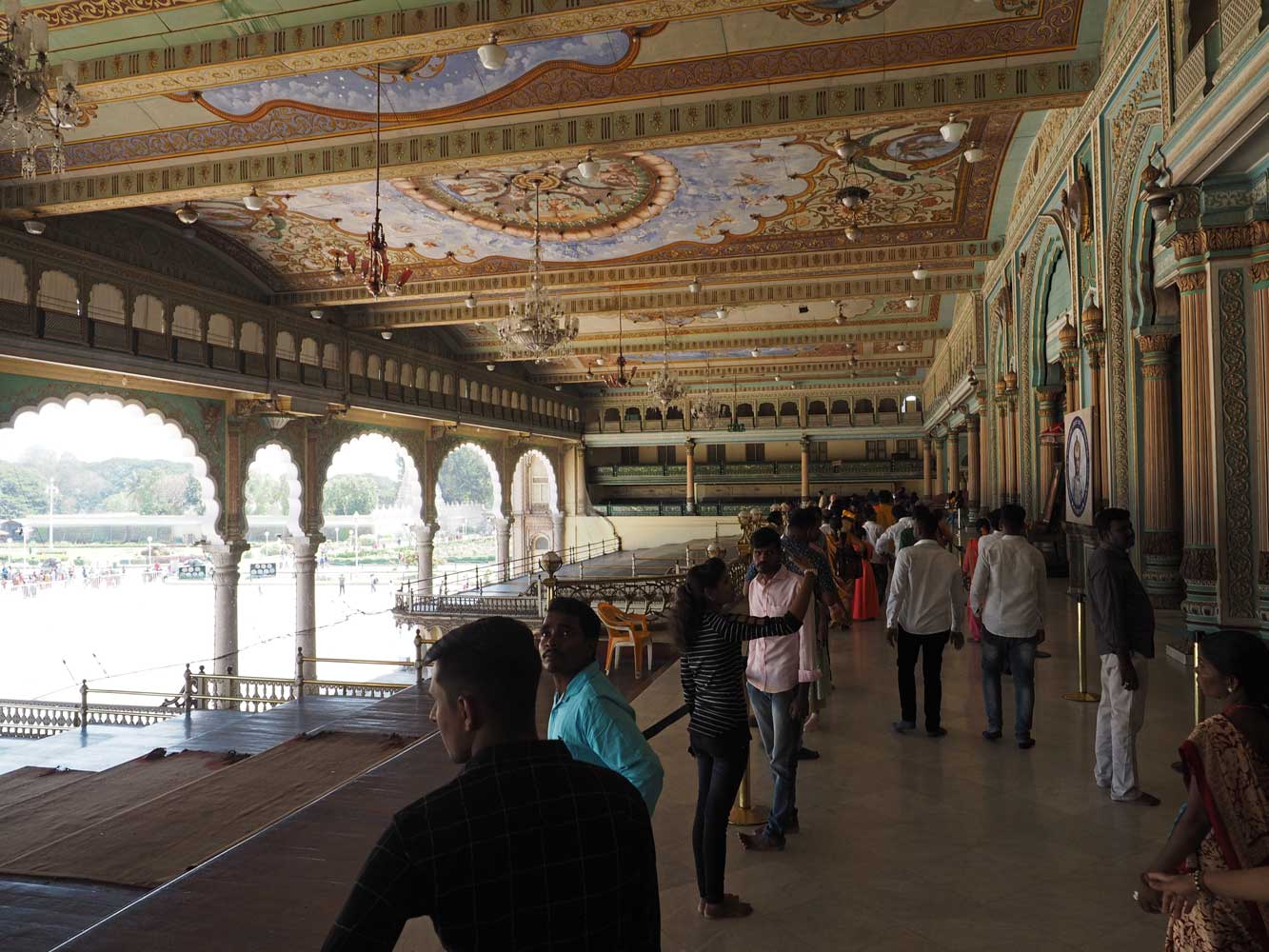
The Public Darbar Hall is 42.75 meters long!
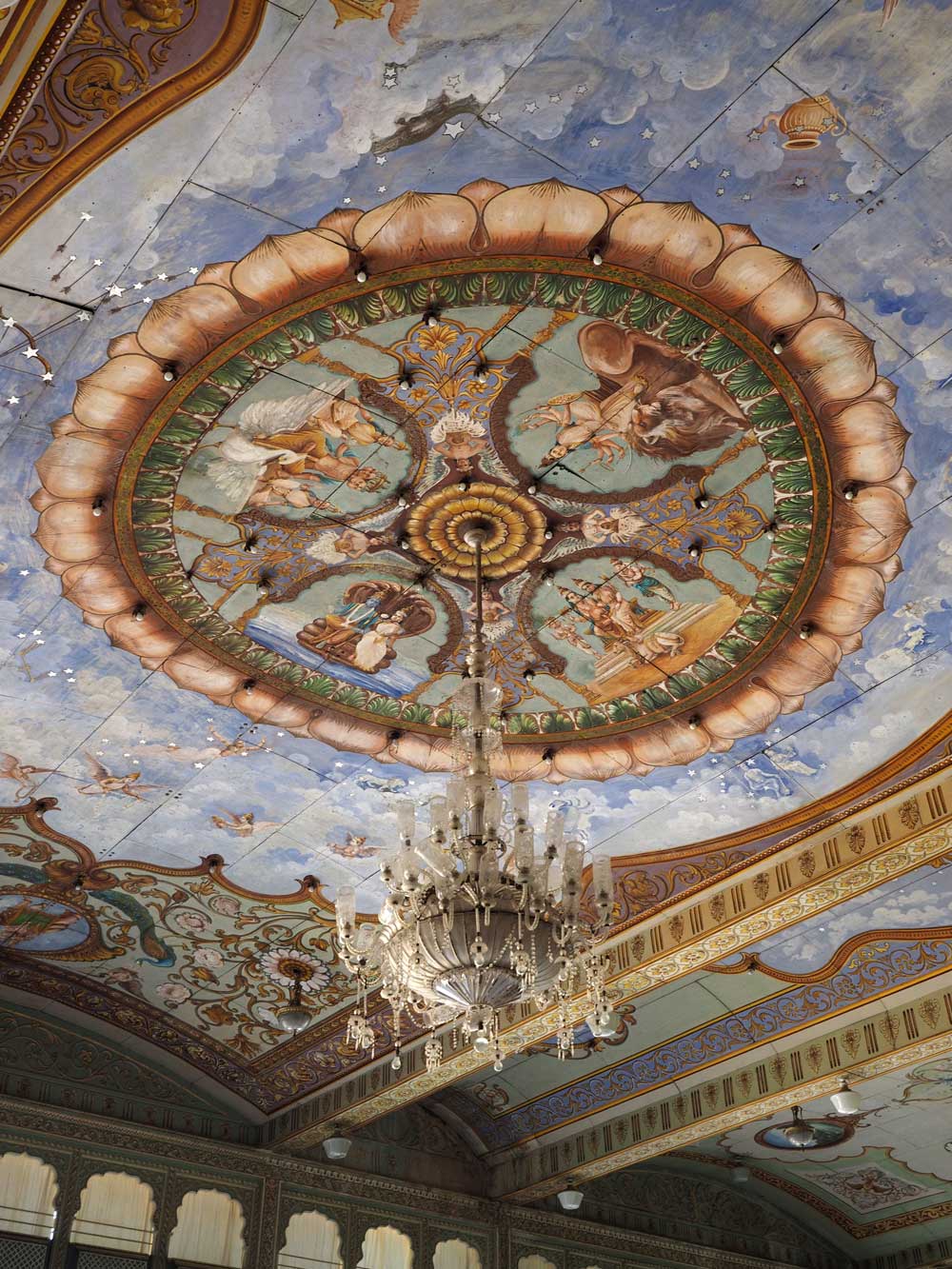
Ceiling detail

Arches form tunnels in the back of the Public Darbar Hall.
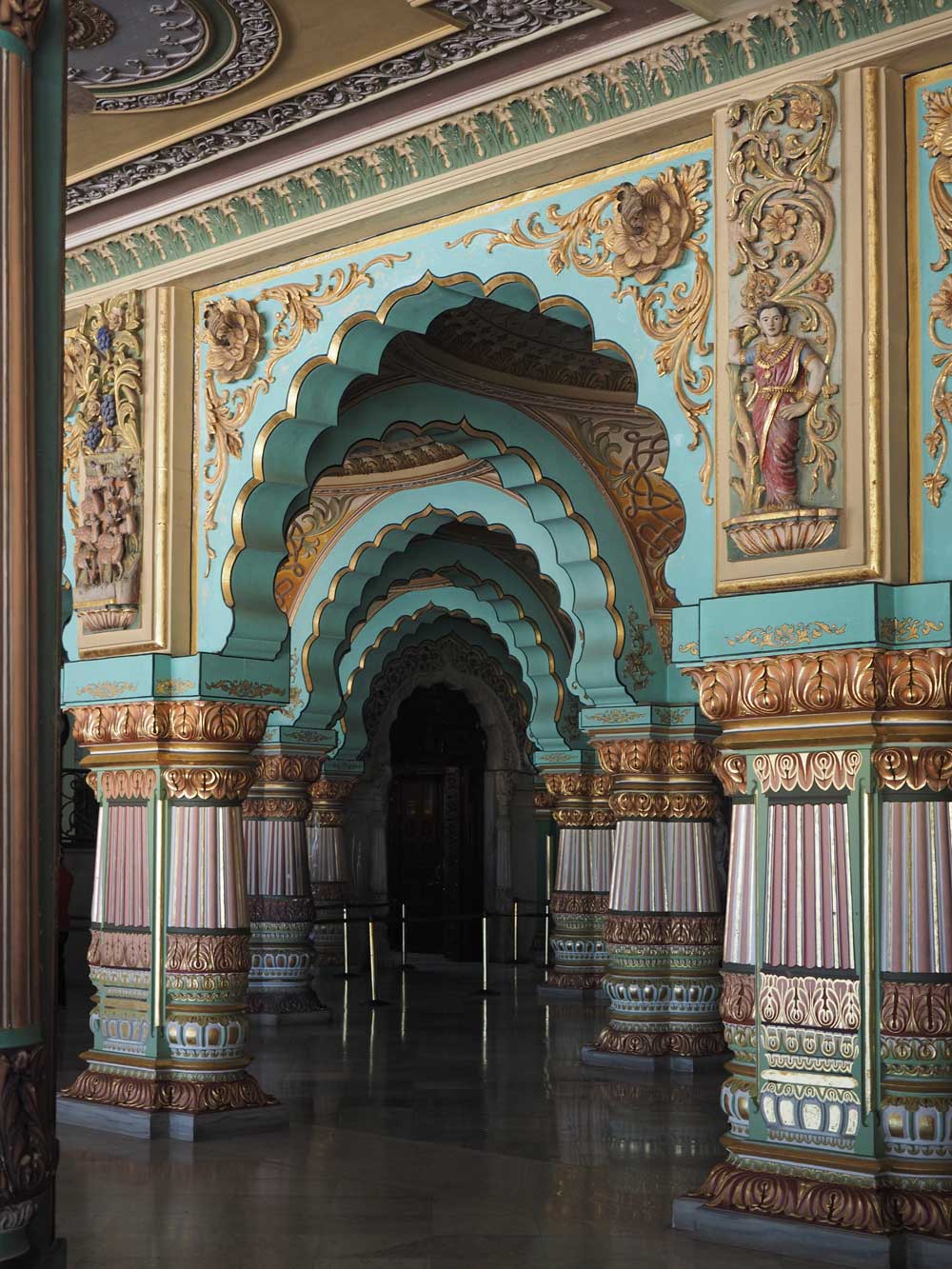
Another angle in the Public Darbar Hall
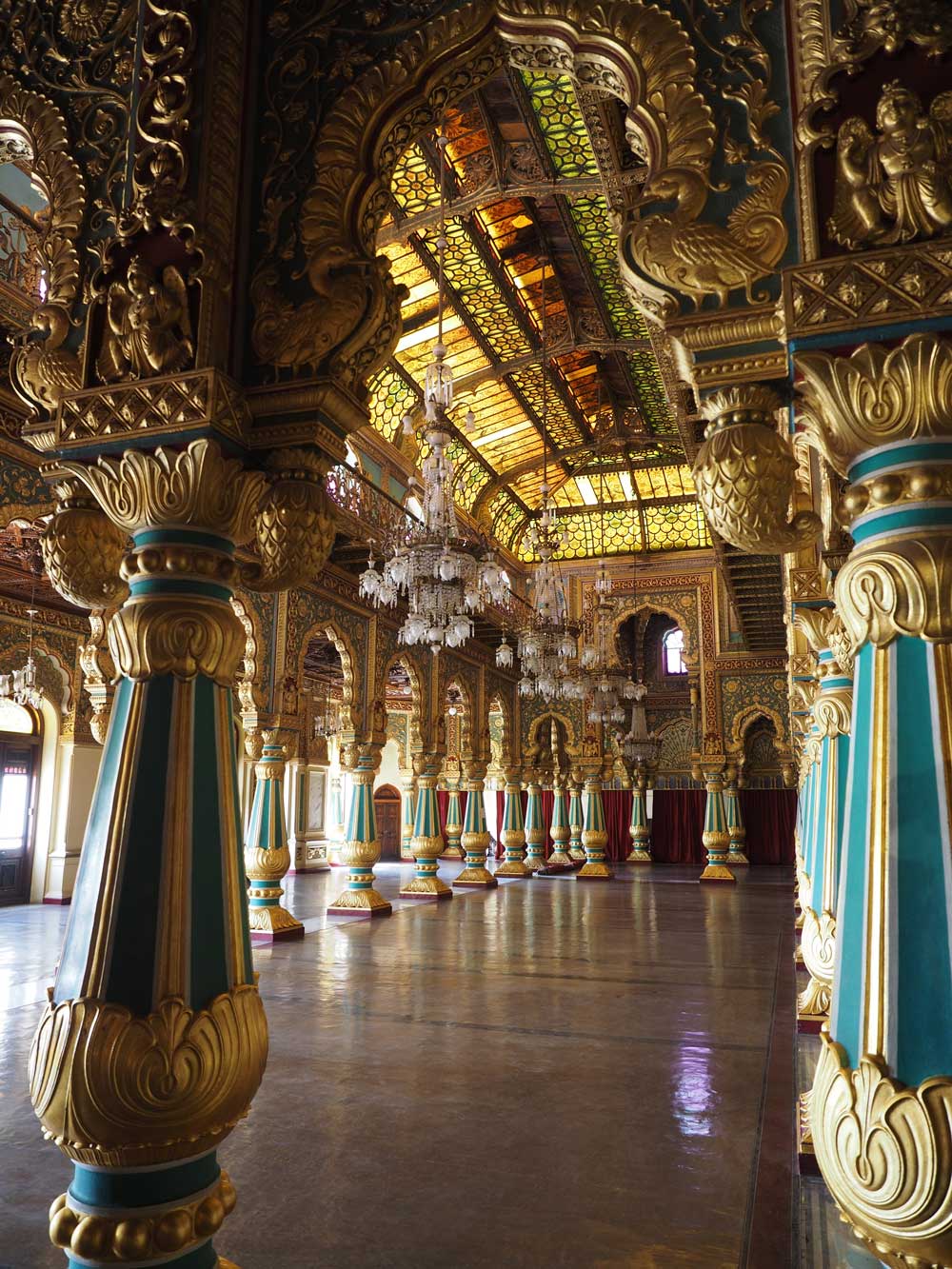
The dazzling Private Darbar Hall; a gold throne is placed here during the
Dasara Festival.

Mysore Palace and its rose garden
I had asked travel agencies for train tickets, but all directed me to the train
station. So I returned there and found the office open and a bit less crowded
than when I had arrived in Mysuru. I settled in for a long wait, but then
noticed a sign for seniors at one window. I walked up and waited for an elderly
man to finish his ticketing, then submitted my form for a ride on the Hampi
Express 16592 in three days time. This was successful and I soon had the ticket
(Rs. 1230) for a 2AC (two-tiered air-conditioned) lower berth on an overnight
ride of about 12 hours. This would be very convenient and drop me off early in
the morning at Hospet, just a short taxi ride from Hampi and its countless
temples and other remnants of the Vijayanagar Kingdom.
21 January Mysuru (Mysore)
Yesterday I saw a sign for the residential quarters at Mysore Palace, so today I
returned to see them. But before doing so I made another enjoyable walk through
the main palace. The Residential Wing in the rear of the main palace has a
similar layout but on a smaller scale, with a courtyard downstairs now
containing many royal palanquins, turbans, and other memorabilia. Upstairs I
looked into a series of reception rooms, one with silver-covered furniture.
Colorful Hindu paintings line the hallways. Admission is higher here for
foreigners at Rs. 180, and there’s no photography. Afterward I visited two
nearby temples, both open to non-Hindus, one with a tall entry tower and
dedicated to Lakshmi, the other to Krishna.
A three-wheeler took me north to the Government Museum, also known as The
National Museum of Mankind or the Indira Gandi Rashtriya Manav Sangrahalaya;
free admission. The modest collection specializes in textiles and handcrafts of
tribal groups across India and featured large terracotta sculptures in front and
out back. The old building served as the 1799-1801 residence of Arthur
Wellesley, who later became the Duke of Wellington and earned fame by defeating
Napoleon at Waterloo. I wished to see the Rail Museum, but misleading online
reviews indicated it open when the place had closed for renovation. So I took
the three-wheeler back to my hotel and went over to Café Aramane for dinner.
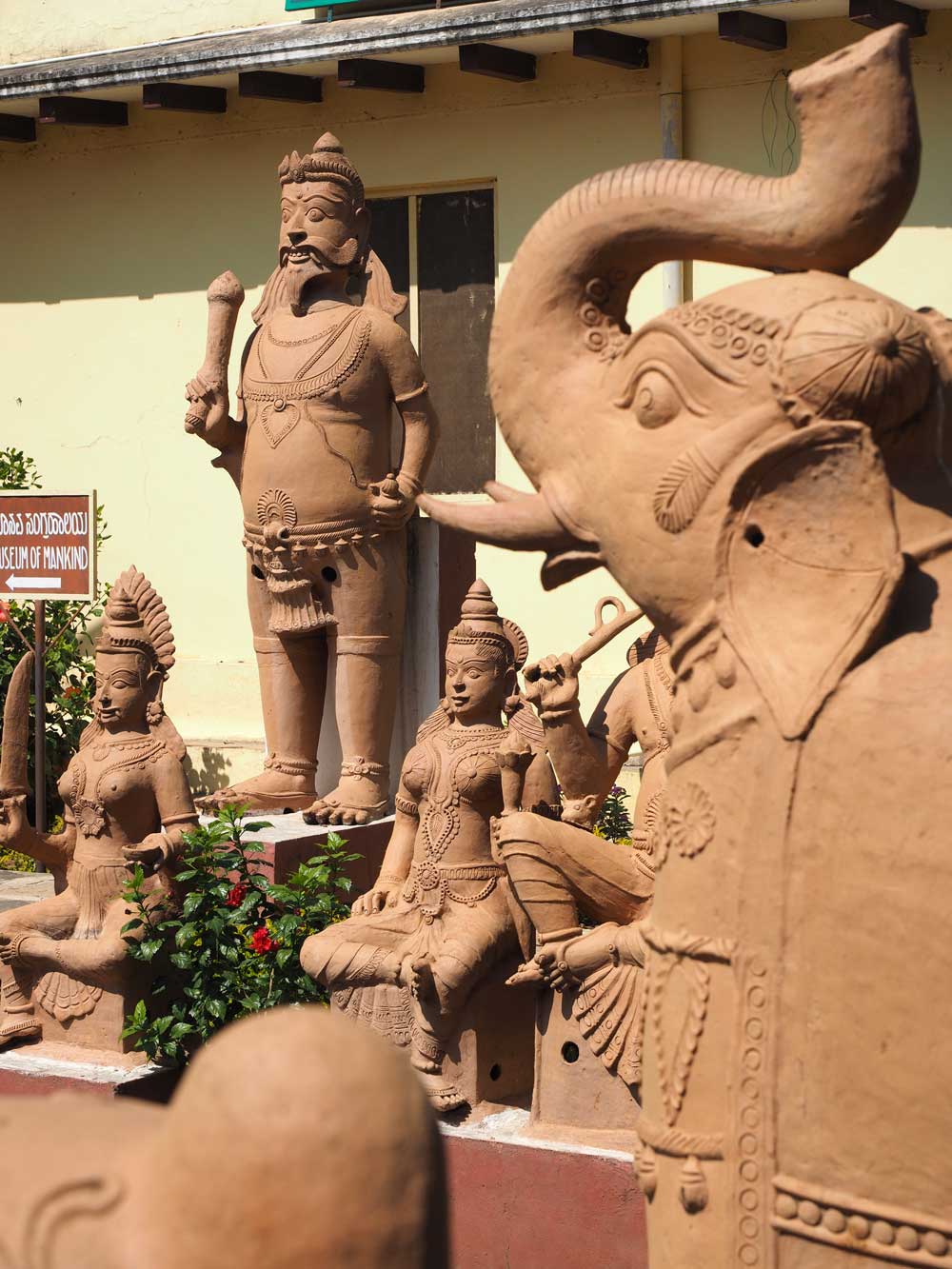
Terracotta figures frolic in front of the National Museum of Mankind.
22 January Mysuru (Mysore)
In late afternoon I made the pilgrimage up Chamundi Hill’s 1,000-plus stone
steps to Sri Chamundeswari Temple at the top. An Ola taxi brought me to the base
of the walkway, and I began the long climb past a troupe of monkeys. Views
across Mysore became more expansive as I slowly ascended. A cooling breeze made
the walk very pleasant. At the 700th step I stopped to admire the huge
monolithic Nandi, Shiva’s mount, 24 feet long and 15 feet high. In 1984 when I
made this climb the statue had a black color from anointments with oil, but now
it had been scrubbed back to its natural granite hue. I reached the temple in
just under an hour, and was happy to find that it’s open to non-Hindus. The
goddess Chamundeswari is Durga, a fierce form of Shakti, the divine feminine
creative power. I entered through the high eastern tower and looked into the
main and other shrines of the temple compound. Afterward I continued to the
relatively modest temples to Shiva and Vishnu nearby. Lastly I easily caught the
public bus down to the City Bus Stand, an easy walk to Café Aramane for dinner.
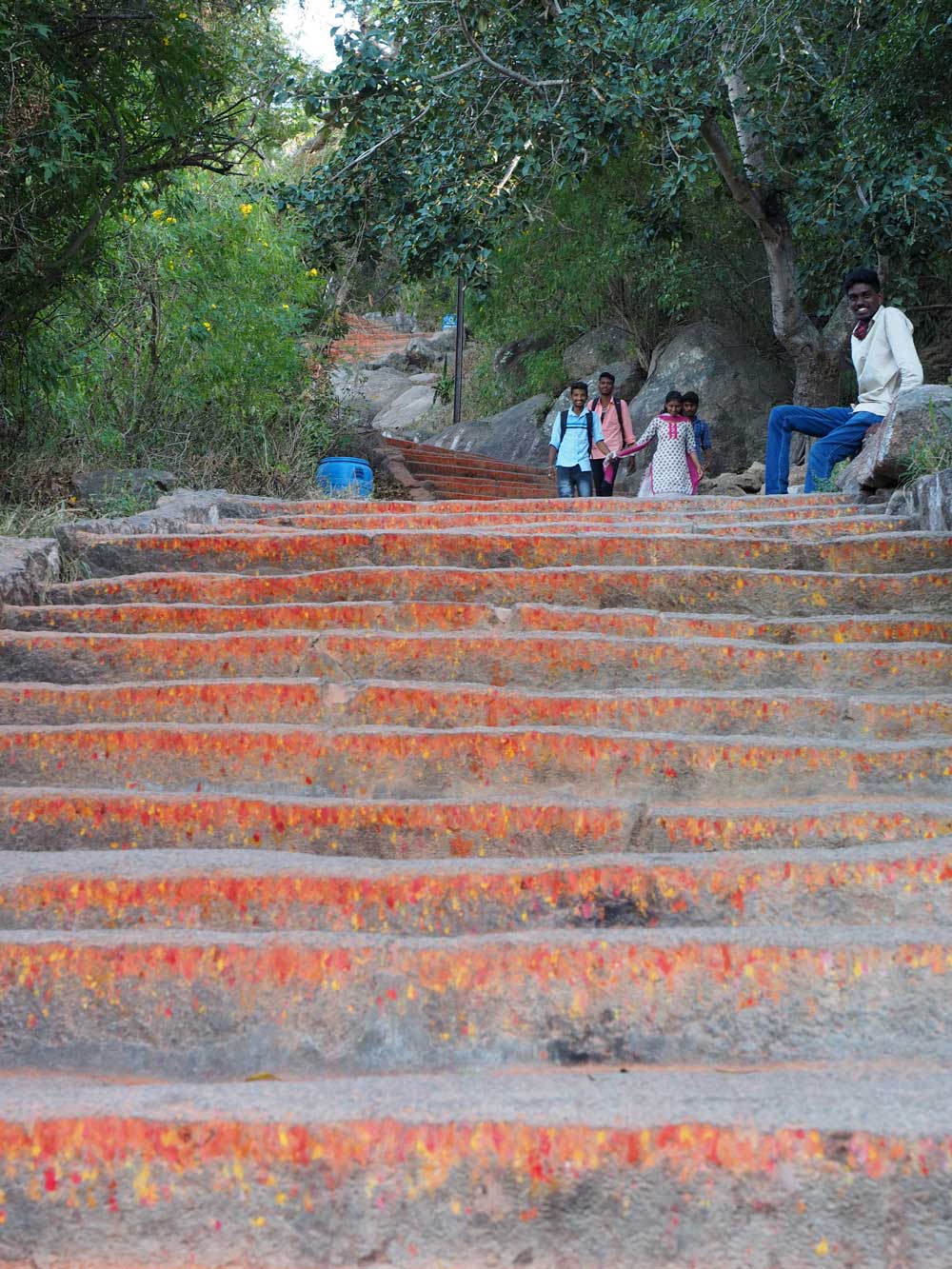
Pilrims in the past have placed colors on the steps up Chamundi Hill.
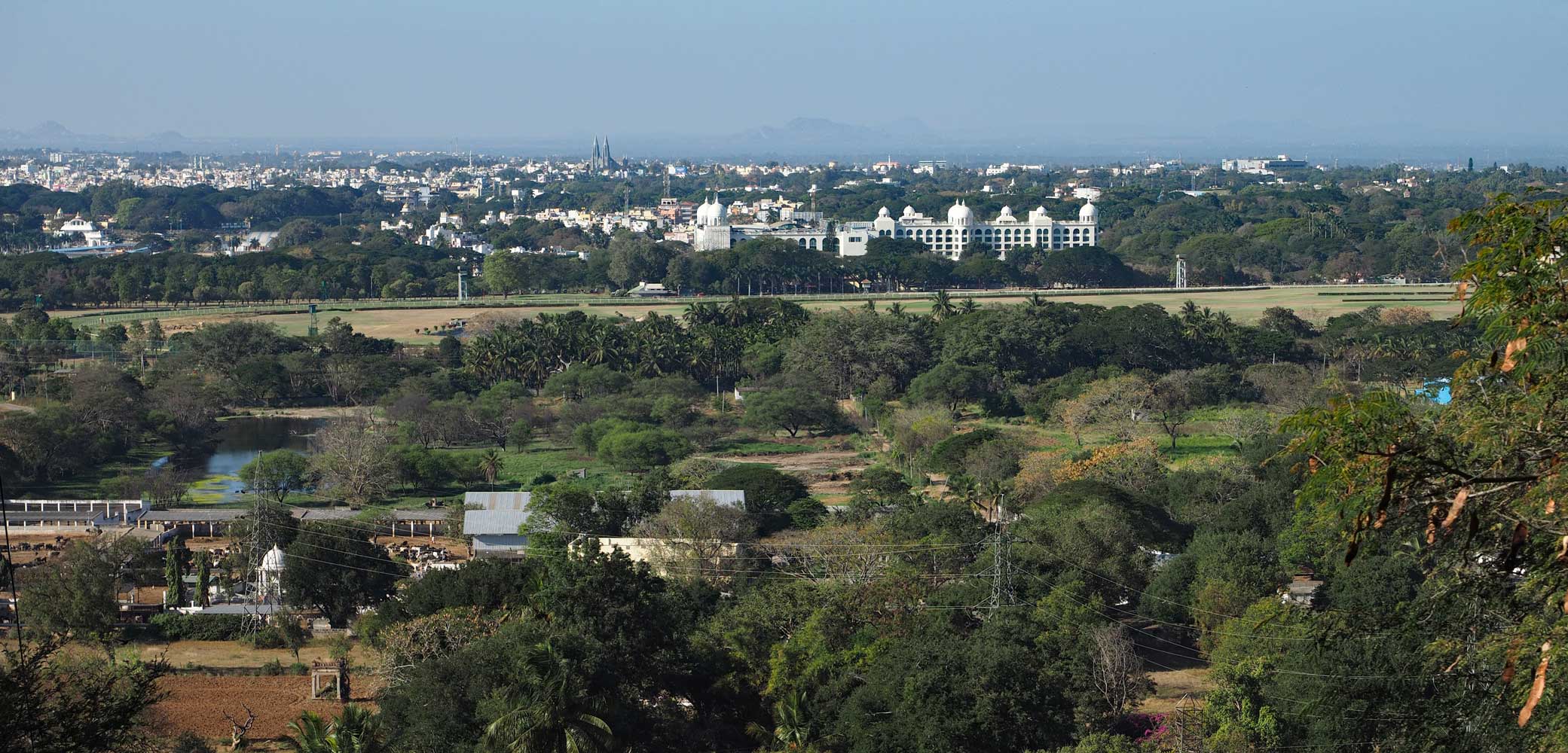
View north
across Mysuru as I begin the climb.
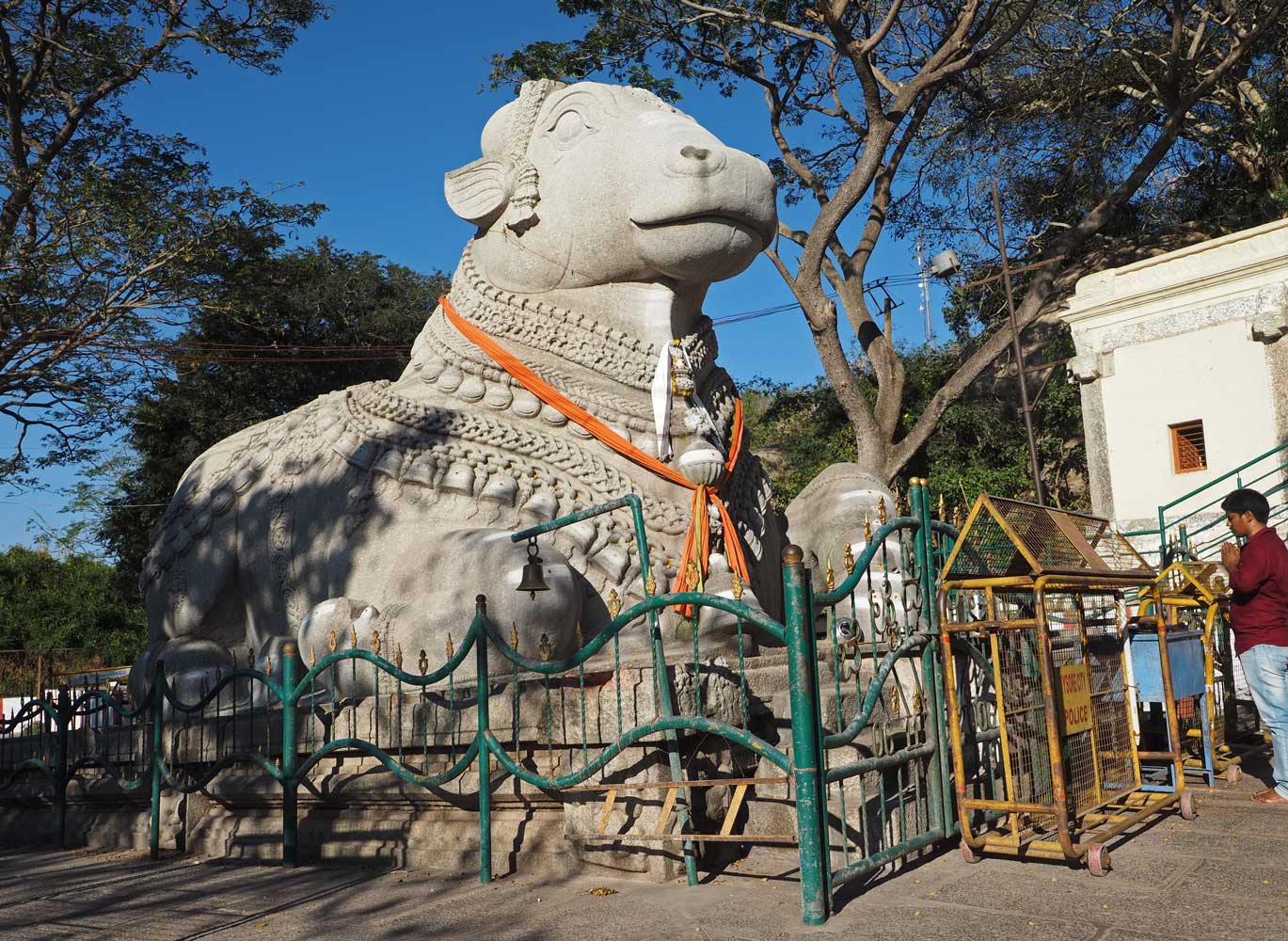
The giant Nandi

Nandi when
I visited in 1984
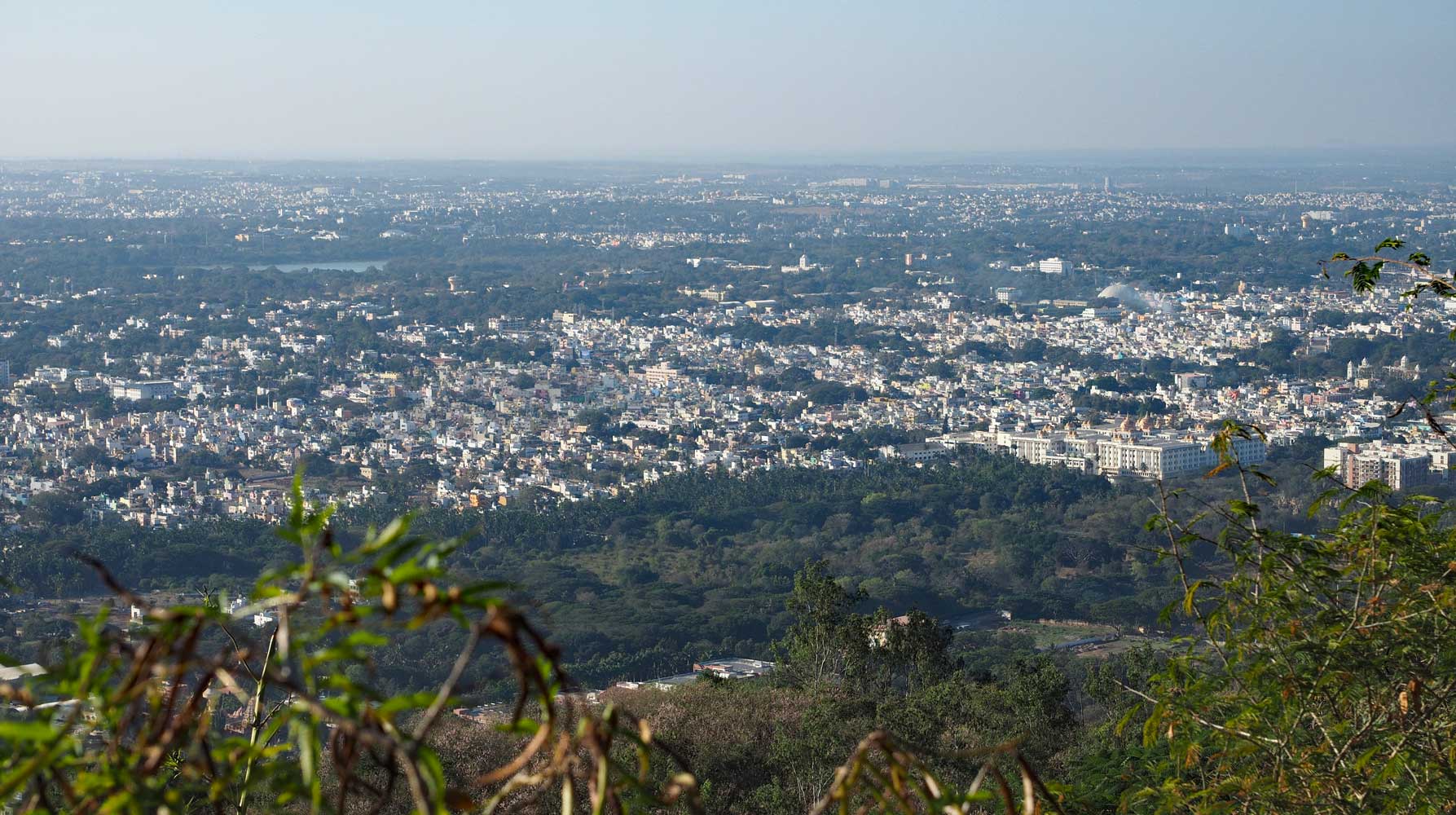
Panorama of Mysuru from near the top
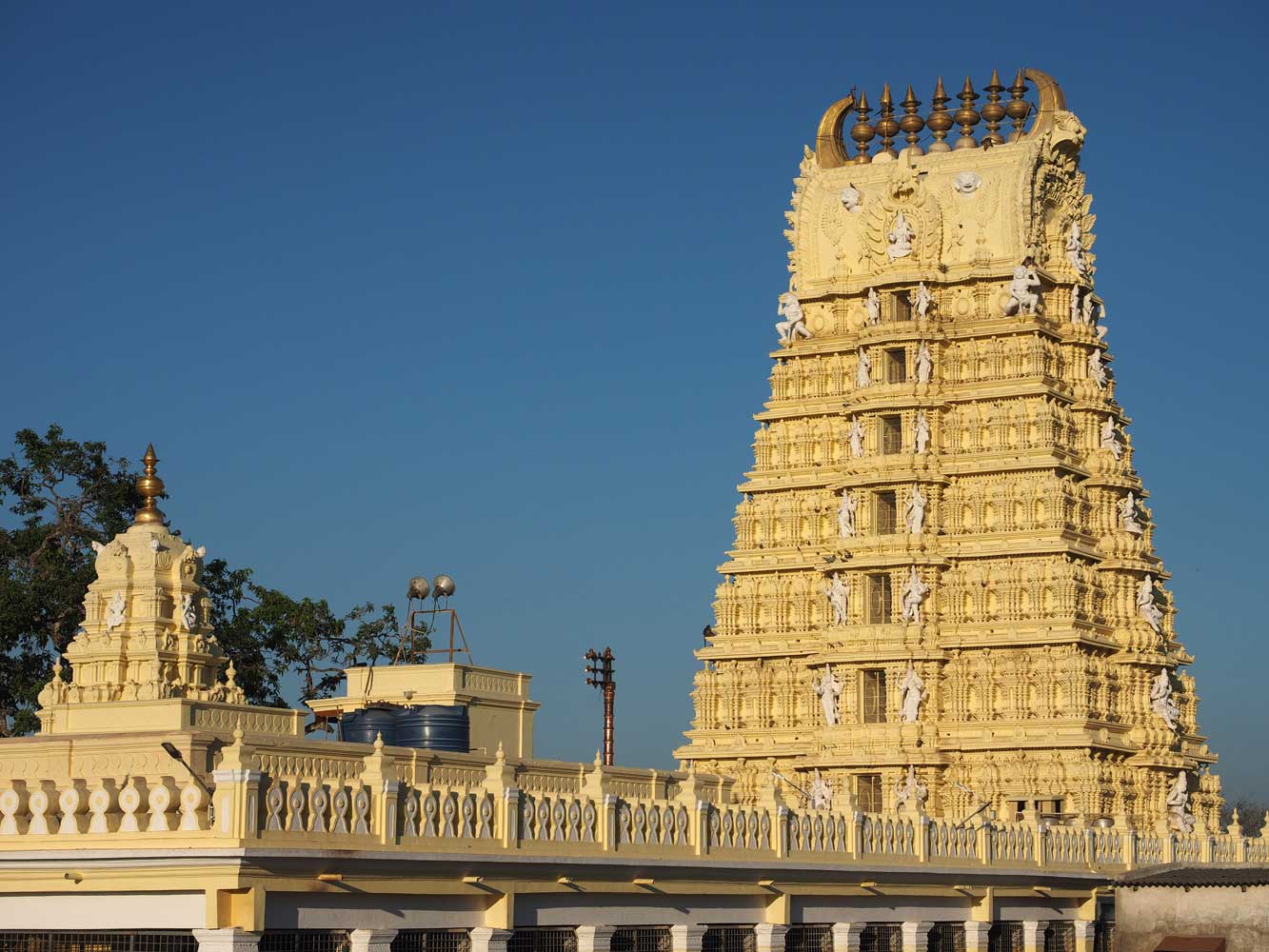
Sri Chamundeswari Temple
The small tower stands over the sanctum of the
goddess; the high tower rises over the eastern entrance.
23 January train Mysuru-Hosapete
I packed up, then hung out most of the day at my hotel before getting a
three-wheeler to the train station. Before boarding I enjoyed a tasty and
filling Special South Indian Meals at Adyar Ananda Bhavan, which turned out to
be a good move as no meals were offered during the train ride. Hampi Express
16592 departed on time and I had a lower berth in the two-tier compartment. Two
French women got the upper berths and an Indian man the other lower berth.
Around midnight the train stopped in Bengaluru (Bangalore), Karnataka’s capital
city and an IT center. I had enjoyed a week-long visit there one year ago, so
had decided not to stop in the city on this trip.
On to Hampi—Part 1
Back to beginning of “Backpacking 2020: India, Singapore, and Philippines”